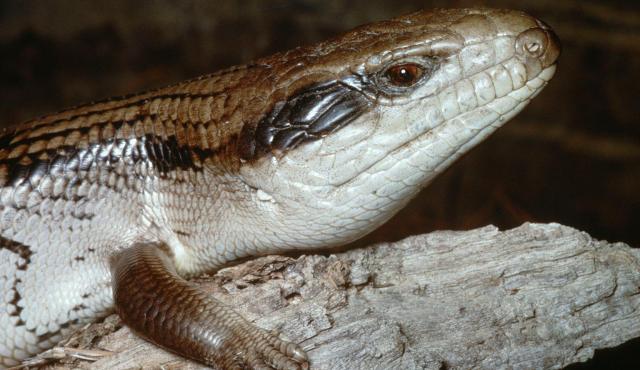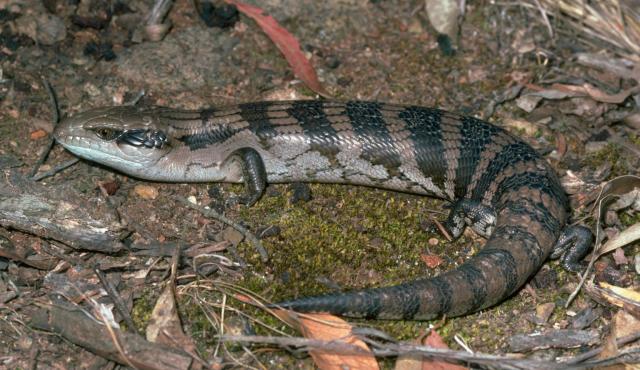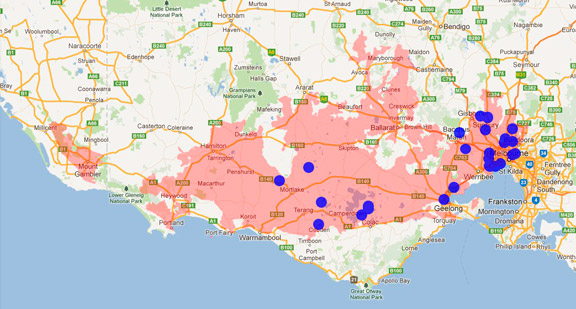A range of teacher professional learning programs will be developed to accompany the Biodiversity of the Western Volcanic Plains online outreach...


Common Blue-tongue Lizard
Tiliqua scincoides
Lives alone for most of the year. Viviparous (live young). Females produce up to 25 live young which are self sufficient and disperse after a few days. Possess a Jacobson's Organ on the roof of the mouth which is used to detect chemicals emitted from prey.
| Details | Description |
| Type | Reptile |
| Group | Lizard |
| Other Common Names | Common Blue-tongued Skink, Eastern Blue-tongue, Tongued Lizard |
| Identifying Characteristics | |
| Distinctive Markings | Bright, blue, fleshy tongue used to scare away predators. Seven to ten dark bands across the body. |
| Diet | Omnivore. Feeds on plant and animal material including snails, beetles, wildflowers, native fruits and berries. |
| Habitat | Basalt plains west of Melbourne and the Mornington Peninsula, including urban areas. |
| Native Status | Native to Australia |
| Taxonomy | |
| Phylum | Chordata |
| Class | Reptilia |
| Order | Squamata |
| Family | Scincidae |
| Genus | Tiliqua |
| Species | scincoides |

Distribution maps indicate current and historic locations where species have been sighted.
Source: Atlas of Living Australia
| Conservation Status | |
| DEPI Advisory List | Not listed |
| FFG Act | Not listed |
| EPBC Act | Not listed |
The conservation status of species is listed within Victoria and Australia.
The Department of Environment and Primary Industry (DEPI) Advisory List consists of non-statutory advisory lists of rare or threatened flora and fauna within Victoria.
The Flora and Fauna Guarantee Act 1988 (FFG Act) lists threatened species in Victoria. Under the Act, an Action Statement is produced for each listed species.
The Environment Protection and Biodiversity Conservation Act 1999 (EPBC Act) is the Australian Government’s key piece of environmental legislation, listing nationally threatened native species and ecological communities.



